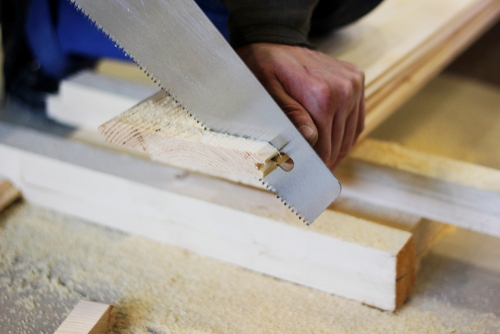Home Depot (NYSE: HD) is arguably the biggest player in the home improvement industry. The company was founded in 1978 out of Atlanta, Georgia. In the 40+ years since then it has opened over 2,300 stores between the US, Canada, and Mexico. Home Depot is a $214 billion business and they pulled in $108 billion in sales last year. The stock’s market capitalization comes in around $200 billion which is double that of rival Lowe’s.
Business Overview and Highlights
Home Depot operates within the consumer sector, and maintains a high credit rating (A) from the S&P. With such a solid credit rating Home Depot can issue cheap debt to grow the business and pay dividends.
In February, the company announced a dividend hike from $1.03 to $1.36 per share. That’s a 32% increase, and just the latest in an upward trend.
Home Depot 10-Year Dividend History
The company paid investors $0.90 per share a decade ago. Home Depot was hit hard by the housing crisis of the 2000’s. However, they have recovered nicely. Over the last 10 years, the dividend has climbed to $4.45. That’s a 394% increase, and you can see the annual changes below…

The compound annual growth is 17.3% over 10 years, but over the last year, the dividend climbed 25%. That increase in dividend growth is a great sign. Home Depot might work out as a great income investment. Let’s take a look at the yield…
Current Dividend Yield vs. 10-Year Average
Home Depot’s long history of paying dividends makes it one of the best dividend stocks around. This also makes the dividend yield a great value indicator. A higher yield is generally better for buyers. Sustainability is also vital, and we’ll look at that soon.
The dividend yield comes in at 2.87% and that’s above the 10-year average of 2.71%. The chart below shows the dividend yield over the last 10 years…

The higher yield shows that investors have bid down the company’s market value. They might be expecting higher growth and payouts. But more often than not, the dividend yield is mean reverting with share price changes.
Improved Dividend Safety Check
Investors look at the payout ratio to determine dividend safety. They look at the dividend per share divided by the net income per share. So, a payout ratio of 60% would mean that for every $1 Home Depot earns, it pays investors $0.60.
The payout ratio is a good indicator of dividend safety. However, accountants can manipulate net income. They adjust for goodwill and other non-cash items. A better metric is free cash flow.
Here is Home Depot’s payout ratio based on free cash flow over the last 10 years…

The ratio is fairly steady over the last 10 years and the trend is up. The last reported year shows a payout ratio of 47.8%. This gives wiggle room for Home Depot’s board of directors to raise the dividend.
Home Depot also has potential to grow earnings even more in 2019. Many thought that a company like Home Depot would be immune to e-commerce competition. That’s because the nature of their products make delivery very difficult. However, the company has unveiled a new program called “One Home Depot” which has enabled remote purchasing and delivery. This program gives Home Depot a competitive edge that should increase dividend growth for years to come.
Good investing,
Robert
